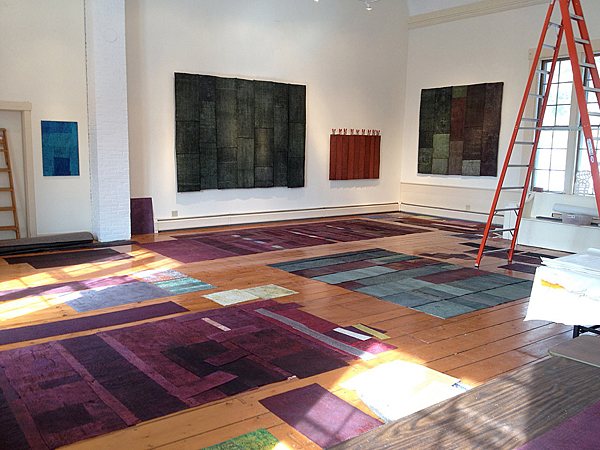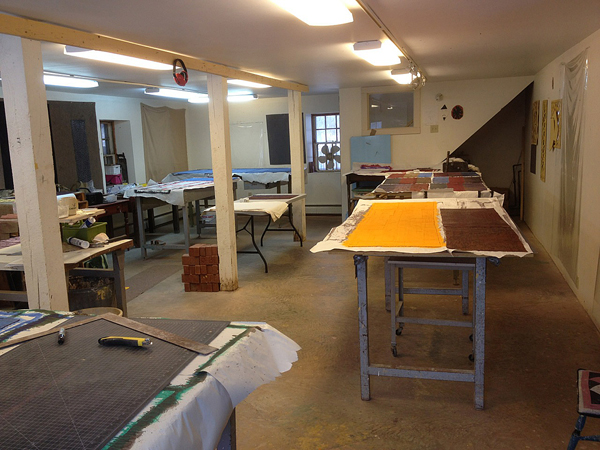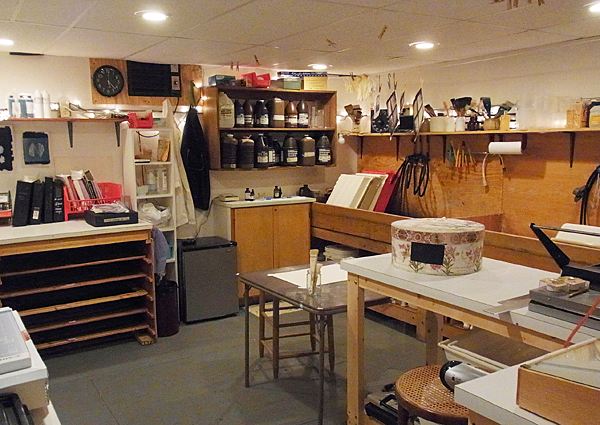GEORGE MASON GeorgeMasonArt.com

Big room studio: encaustic, assembly and occasional gallery

Ground floor studio: wet works
Since I live in what was once a church I have more room than most. This affects my studio practice considerably, as I feel less pressure to force a “resolution” onto a piece simply to make room for the next question. I can lay the work out on the floor or put it up in the big room and walk away. The in-passing glances over time (sometimes 6 months) clarify how to re-enter, or help me to come to accept that the encounter is complete. And then there are all those efforts that, over time, simply asked to be excused; and for them, no decision is required.
BOB RICHARDSON RNRichardson.com

When my wife and I made the decision to leave our 14-acre farm in Washington, Maine, for a much smaller home “closer to the action,” it was clear that our choice (in Camden) had no existing space for my studio. The agreement was that building it would be at the top of the “must do” list. We moved in September (2013) and, much to my amazement and great joy, the studio is built and very much in use. It is a modest 16’ by 19’ space that holds room for my piano (I also compose), an ancient chair for relaxation, my entire nautical library, and plenty of room for me to continue painting the systemic work that has engrossed me for the past four decades. This whole process is chronicled in my blog, for anyone to see additional photos and perhaps learn more about my paintings.
DIANNA RUST DiannaRust.com

For sure my darkroom is not a very beautiful, airy, sunny, or spacious studio. It’s a bit of a dark cave, buried in my basement. However, as I need water, sinks, and low light, it’s the ideal place for me. Once I close the door and put on some music, or MPBN, I’m soon lost in the flow (hopefully) of what I want to create. I still process sheet film from my homemade hatbox pinhole cameras, or I oil pieces of cheap printing paper to make negatives from scanned objects or to enlarge images. As I am not doing any more black and white printing on gelatin paper, my enlarger went ages ago. Today, almost all of my work involves some kind of hand-coated alternative process, which can involve a lot of mixing, brushing, and, often, splashing and mess-making! It’s low tech and hands on.
